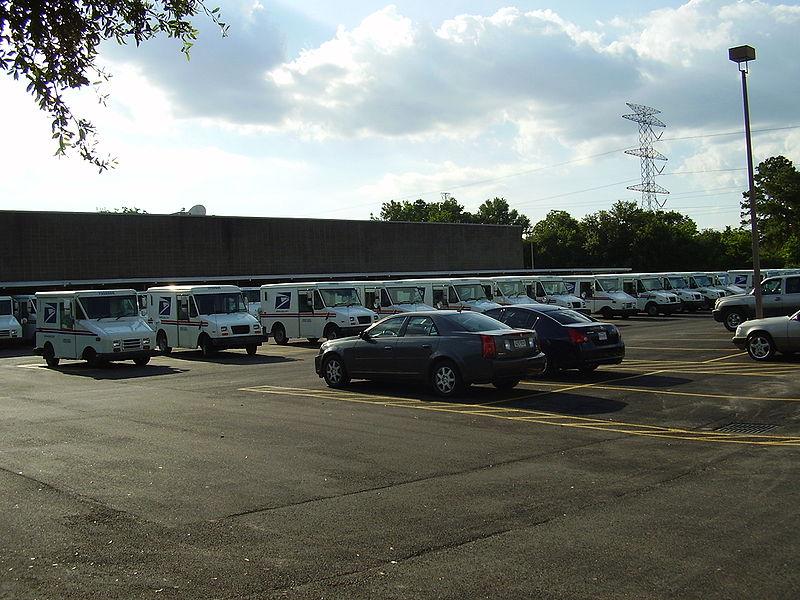U.S. Postal Service proposing to slow down delivery of first class mail
A fleet of post office vehicles at the James Griffith Station Post Office in Spring Branch, Houston. (Photo by WhisperToMe, via Wikimedia Commons, cc-by-sa.)
The U.S. Postal Service has unveiled plans to end all next day delivery of First Class mail.
The proposal, if approved by postal regulators, mean, starting next spring, most customers will instead receive mail in two to three days, even if it’s coming from a nearby town. This will allow the Postal Service to close roughly half of it’s nearly 500 mail processing centers.
This is all in an effort to stem the billions of dollars of losses the Postal Service has suffered in recent years and, hopefully, to stave off bankruptcy.
Ed O’Keefe, “Federal Eye” blogger for the Washington Post, said a few business customers will still be able to get some mail to customers via next day mail, but only if they meet specific requirements. For average mailers, they’ll be out of luck.
“Jack and Jill mailer who need to send something to Grandma, or send a letter to their lawyer, will have to wait two to three days,” O’Keefe said.
In reality, O’Keefe said, most First Class was actually delivered over night. But declining volume has meant the USPS can’t justify keeping the infrastructure in place to support that. Mail peaked at 104 billion items in 2001 and has fallen to just 73.5 billion in 2010. Further drops are predicted.
“That’s why they need to make an adjustment.
This won’t have any effect Express and Priority mail, which can still provide next-day service for individual mailers.
The Postal Service, a quasi-independent business that doesn’t receive tax dollars but does endure Congressional oversight, has been scrambling as it attempt to compete with private companies and remain compliant with special restrictions Congress has imposted upon it.
In addition to these proposals, the postal service is trying to get Congress to approve other proposals that can’t be implemented without legislative authority, such as end Saturday delivery and close thousands of post offices.
“Problem is, because the Postal Service is written into the Constitution, it’s a government function,” O’Keefe said. “Yes it is a quasi-government entity, but it likes to behave more like a business. And problem is it has 535 (people on) a board of directors, who are members of the House and the Senate.”
